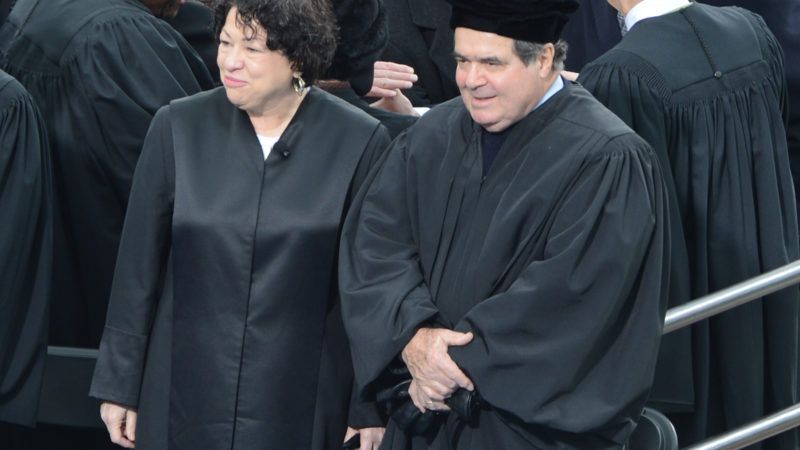Invoking Scalia, Sotomayor Presses for Broad Fourth Amendment Protections
The Supreme Court weighs police shootings and unreasonable seizures in Torres v. Madrid.

The Fourth Amendment right to be free from "unreasonable…seizure" includes the right to be free from unreasonable arrest or detainment. Does it also include the right to be free from what we might call unreasonable attempts or efforts at arrest or detainment? The late Justice Antonin Scalia thought that it did. "The mere grasping or application of physical force with lawful authority, whether or not it succeeded in subduing the arrestee," Scalia wrote for a unanimous Supreme Court in California v. Hodari D. (1991), qualifies as a seizure for Fourth Amendment purposes.
Earlier this month, however, the Supreme Court heard oral arguments in a new Fourth Amendment that asks whether Scalia might have got it wrong.
In Torres v. Madrid (2019), the U.S. Court of Appeals for the 10th Circuit held that no seizure occurred when officers with the New Mexico State Police shot Roxanne Torres twice in the back, because their bullets did not actually stop her from getting away. According to that court, "an officer's intentional shooting of a suspect does not effect a seizure unless the 'gunshot…terminate[s] [the suspect's] movement or otherwise cause[s] the government to have physical control over him.'"
Torres was sitting in her car in her apartment building's parking lot when it went down. The officers were there to arrest somebody else. They claimed they approached her because she was acting suspiciously. According to Torres, she thought she was about to be carjacked, later testifying that the officers never identified themselves as they crowded her vehicle. Fearing for her safety, she drove away. The officers then shot her twice as she fled. She only learned that it was the police who pulled the trigger when she was arrested a day later at the hospital.
The Supreme Court heard oral arguments in Torres v. Madrid on October 14. "Roxanne Torres was not seized by either [Officer] Janice Madrid or [Officer] Richard Williamson," New Mexico lawyer Mark Standridge told the justices. "At no time did the officers acquire possession, custody, or control over her. Indeed, [Torres] never stopped in response to the police action. As the officers did not seize [Torres], they cannot be held liable to her for excessive force in violation of the Fourth Amendment."
Unsurprisingly, the Court's most hawkish Fourth Amendment advocate, Justice Sonia Sotomayor, did not seem to find that position particularly palatable. "Counsel, there is an element to the Fourth Amendment that all of our cases, including Hodari, recognized by Justice Scalia," she said, "that has to do with the Fourth Amendment's protection of bodily integrity. It is why we call putting a needle in someone's arm a seizure that requires either probable cause or exigent circumstances, et cetera."
And that conception of bodily integrity, Sotomayor continued, includes "the seizure of the person with respect to the touching of that person because even a touch stops you. It may be for a split second, but it impedes your…movement and offends your integrity."
What you are asking the Court to do, Sotomayor told Standridge, is "reject the clear line drawn by Hodari and say that Justice Scalia was wrong about what the common law showed." Sotomayor left little doubt that she was with Scalia on that one.



Show Comments (110)